Breadcrumbs navigation
- Press releases

After the pandemic, Czechs form the largest group of visitors to Prague. Trailing behind them are tourists from Germany and the United States.
Prague, 9 November 2022 - After the pandemic, more and more tourists from the Czech Republic are coming to Prague. According to data from the Czech Statistical Office, 397,265 people arrived in the metropolis during the summer holiday months and September, and their number increased by a full 32% compared to the summer of 2019. Almost 1,447,067 foreign tourists arrived. The largest group consisted of tourists from Germany. In the summer period, there was a further increase in the number of tourists from the United States, which proportionally returned to pre-pandemic numbers. The Prague Visitor Pass tourist card, which has been bought by several thousand Czech and foreign guests, is also supporting new arrivals.
According to statistical data from the Czech Statistical Office, a total of 1,844,332 tourists traveled to Prague during the summer season (July-September), most often they were tourists from the Czech Republic (397,265), Germany (256,427), the United States (119,279), Poland (105,579), Slovakia (100,444), and Great Britain (71,311). Compared to 2021, this is a 77% increase, but compared to pre-pandemic 2019, this represents only 80% of visitor numbers. Tourists from the United Sates are returning to Prague, but travelers from Southeast Asia are still in small numbers, specifically 32,883 of them arrived in the summer season, which is 86% less than in the same period in 2019.
“More domestic visitors and tourists are spreading outside the busiest places in the center. Despite COVID-19, together with Prague City Tourism we are succeeding to fulfill the new strategy and are gradually cultivating tourism in the capital,” says Hana Třeštíková, Prague Councilor for Culture and Tourism.
Representatives of Prague City Tourism perceive the current increasing trend in the ratio of domestic tourists to foreign tourists as being very positively. Before the pandemic, domestic guests made up only 15% of the total number of tourists, and Prague lagged behind other European capitals in this regard, which proved to be very problematic during the pandemic, when domestic tourism was crucial for the city. According to the available data, in neighboring Vienna, for example, domestic tourists made up more than 21% of the total number, and in Warsaw they made up more than 60%. Currently, the share of domestic tourism in Prague is 21.5%.
“We are very happy that we are succeeding in arousing the interest of domestic tourists in visiting Prague. Our long-term campaign “ At Home in Prague” has undoubtedly worked and continues to motivate domestic guests to visit Prague through various benefit packages and combined discounts. We are also registering an increased interest in the Prague Visitor Pass tourist card, which provides tourists with an overview of all services and benefits in one place and without worries,” says František Cipro, Chairman of the Board of Prague City Tourism. According to Mr. Cipro, the Czech clientele is very valuable and important for the city, because this type of traveler has local knowledge and therefore contributes to the development of local culture.
Prague City Tourism supported domestic and inbound tourism with strong marketing, especially with the Stay in Prague digital campaign and the domestic tourism campaign At Home in Prague. The campaign aimed at foreign guests has had excellent results on the Polish, Italian, and German markets and has proven to attract tourists from these countries to the metropolis. The above-mentioned Prague Visitor Pass also serves as a great benefit to visitors. Also, according to data available from Mastercard, thanks to it, tourists frequently visit other parts of Prague in addition to the historic center.
A guide to Prague, Czech Republic's evolving capital
Prague's Charles Bridge leads across the Vltava River to the Malá Strana neighbourhood.
Back in 1992, the opening of the first McDonald’s in Prague was a red-carpet event. Gowns were worn, celebrities were summoned, paparazzi stood poised and 11,000 people lined the streets. With the ousting of communism after the Velvet Revolution in 1989, the ascent of Westernised, globalised culture was swift and the city’s newly liberated locals were hungry for all that had been suppressed during the 40-year Soviet rule.
Then came tourism, ushering in all the heady highs and inevitable lows of easy-spending, camera-wielding travellers to the compact, cobbled streets of Prague’s medieval Old Town, including a slew of stag parties, which the Czech capital has been at pains to curb. But times change and, in recent years, a new generation of young, creative, entrepreneurial locals — the first to be born post-communism — is reconnecting with traditional Czech culture through food, fashion, art and design. And many are now reimagining their city afresh for a new breed of inquisitive traveller.
The crucible of this cultural renaissance is the suburbs. There’s another Prague to be discovered beyond the Old Town for those who criss-cross the bridges spanning the Vltava River, and head away from the UNESCO-listed Hradcany Castle and the towering gothic spires of St Vitus Cathedral. You’ll find it in industrial-cool Karlín, in the city’s north. It was devastated by floods in 2002, neglected, then repopulated over the past decade by local creatives. Here, restaurants such as KRO and wine bars like Veltlin have upgraded Prague’s food scene with their focus on organic, all-natural produce, plucked from the Czech countryside.
The cultural revival is in evidence, too, in the former factory area of Holešovice, just to the north, which now hums with creative energy thanks to the DOX Centre for Contemporary Art, which hosts cutting edge exhibitions and is home to a fantastical events space in the cantilevered Gulliver Airship. And it’s also apparent in nearby Vinohrady, where pastel-toned buildings take on an almost Parisian feel and cosmopolitan boutiques such as Nila sell Czech brands alongside stylish Sandqvist backpacks, providing yet more reasons to stray away from the trappings of the Old Town.
All this is to say that modern Prague has evolved beyond the medieval rampants that have historically encircled it. Venture into the suburbs and you’ll be richly rewarded with inspirational art and innovative food — and barely a McDonald’s in sight.

Strossmayer Square and the Church of St Anthony of Padua.
Locals in front of the Spanish Synagogue.
Things to see and do
Jatka78 : Language barriers matter little at this envelope-pushing theatre in a small-scale warehouse space in Holešovice, which specialises in dance and Cirque du Soleil-esque performances from visiting troupes. Its non-verbal approach means you’re able to sit back and enjoy the spectacle. From spring to autumn, it also hosts festival-style circus performances in a big-top tent with food trucks and bars.
Taste of Prague: This free-spirited food tour outfit was started by a group of Czech pals in 2011. Tours weave through the hipster suburb of Karlín, built during the industrial revolution to house workers, now brimming with neon-lit restaurants and late-night bars. With a big focus on fun, your Taste of Prague guide will show you the best places for local craft beer, fruit dumplings, fermented cocktails and, of course, schnitzel, goulash and more.
DOX Centre for Contemporary Art: The clue’s in the name at this cutting-edge cultural space in the former factory district of Holešovice. The centre stands in a complex of 19th-century industrial buildings, reborn and topped by the architecturally arresting Gulliver Airship, which hosts workshops and literary talks. The suspended rooftop structure resembles an early 20th-century Zeppelin and also showcases dance, theatre and music.
Vnitroblock: Not content to convert just one industrial building, Vnitroblock has repurposed a whole street in happening Holešovice, from Tusarová 31 to Dělnická 32. Grab a coffee with the co-working crowd in the bare-brick, plant-lined complex, or shop for trainers, go to the cinema, sink beers at a brewery and even try a dance class.
Charles Bridge: Prague’s most distinctive landmark loops over the Vltava as if laced by a fine haberdasher’s thread. It’s best to visit at night or first light to avoid the bottleneck of tourists that occurs during the daytime. The medieval stone-arch bridge statue-studded structure dates back to 1357, and until 1841 was the only way of crossing Prague’s primary waterway, connecting the Old Town in the east with Hradcany Castle in the west.
Jewish Quarter: The former Jewish ghetto of Josefov has become a collection of synagogues, ceremonial halls and cemeteries that together make up a vast museum complex offering entry under one ticket. It details the period from the 13th century — when the resident Jewish community was relegated to this patch between the Old Town and the Vltava — through to the brutal Nazi occupation in the 20th century.

A self-service flower shop in Holešovice’s Vnitroblock development.
Live like a local
Jiřího z Poděbrad: This square in Vinohrady is home to a thriving farmers’ market from Wednesday to Saturday, where producers from the Czech countryside sell their wares. Street food is served — including Jamaican jerk treats, meaty grills and rustic pizza — drinks flow, there’s sometimes music and always a great atmosphere.
Kus Koláče : Queues form outside this neighbourhood bakery on Vinohrady’s main street, Korunní. The reason this humble, hole-in-the-wall bakehouse stands out? The Czech delicacy koláče, a sweet puff pastry filled with gooey fruit, served fresh from the oven. And while you’re here, don’t miss hotspots such as the neon-lit Coffee Room and gilded Výčep gastropub.
Grébovka: Stromovka park in leafy Letná may be the city’s largest, but locals go to leafy Grébovka area for a Sunday stroll, taking in its terraced urban vineyards and wine cellar. This can be followed by a stride through Havlíčkovy park, past Gröbe Villa — the summer home of 19th-century industrialist Moritz Gröbe — ending at the half-timbered Pavilon cafe.
Where to eat
Naše maso: This is no ordinary butcher’s. This meat lover’s palace stocks pork from prized Přeštice pigs, beef from Czech Fleckvieh cattle, and serves a creative carnivorous menu, including meatloaf sandwich and bone marrow with grilled bread. There are tables inside, but most visitors enjoy the food streetside, accompanied by local beers from a self-pour tap.
KRO: This millennial-run outfit has a bakery and bistro in Vinohrady, and a restaurant in Karlín. KRO typifies the evolution of Prague’s suburbs, steered by the first post-Soviet generation. Interiors are hip, food is local and dishes, such as pulled chicken and fermented potatoes, look to the Czech past while keeping things current.
Eska: ‘Potatoes in ash’ might not sound appealing, but you don’t want to miss this dish or its fashionable home in a converted fabric factory in Karlín. By day, locals swoop to this restaurant-bar-bakery for the flame-baked bread. By night, bare brick walls and suspended ceiling plants shelter chattering diners feasting on dishes of duck breast and cauliflower steak.

Grilled Alsatian char at Esk.
Where to shop
NILA vinohrady: If you’ve already hung out in Holešovice and kicked back in Karlín then next visit Vinohrady, where Korunní street brims with bakeries, bars and boutiques, including Nila. Here you’ll find chunky ankle boots from Danish brand Angulus, sustainable threads from Spanish designer Rita Row and traditional Czech dresses by local label Látky z Lásky.
Page Five: Veverkova street in riverside Letná is another burrow of alluring boutiques, including this bookshop, which specialises in arty tomes and prints. Architecture, design, poetry and prose are all featured on the shelves of this penman’s paradise. Snap up everything from coffee-table books to cool canvas bags.
Holport: Your one-stop-shop for homewares awaits in the Holport complex on Komunardů, Holešovice’s main street. This former metal factory, with its brick tower and blocky exterior, was built in 1911 and converted at the turn of the millennium. It hosts fashion shows and a design school, and also stocks brands including arty lighting company Flos.
Where to head after hours
Manifesto Anděl: This new opening of restaurants and bars in a series of shipping containers is set to shape-shift through the seasons, switching from a winter market to poolside spot in summer. The company behind it transforms unloved, abandoned areas by way of street food, cocktails, live music and events.
Lokál : There are various outposts of this classic Czech pub, but its Old Town spot at Dlouhá 33 is the liveliest. Beer mats reading ‘zatluc ho tam’ (‘hammer it down’) indicate the atmosphere. Order booze-mopping plates of fried edam in buttery breadcrumbs and order the three traditional pours of pilsner: the Regular (a normal head); the 60/40 (three fingers of foam); the Milk (almost fully foamy).
Vetlin: If you’re after a classy evening out, head to this bottle-lined wine bar in Karlín, which has an atmospheric cellar downstairs for tastings. Central European vineyards are its speciality, with a particular focus on organic and biodynamic wines. Many of the best Czech labels come from Moravia, but expert staff can steer you to the top tipples.
Where to stay
Hotel Cube: This slick contemporary design hotel stands in a 19th-century building in Prague’s centre. Set in a 1920s baroque revival structure that originally housed Cinema Alma before a 2020 renovation, it’s located on the same street as U Fleků, one of the oldest beer halls in the Czech capital, which has been brewing since 1499.
Botanique: A reception desk backed by plants sets the tone for this new, sustainably minded ‘nature inspired’ hotel in Florenc, a short skip from Karlín. Here, caring for the environment is paramount, with mini-bars removed in favour of a communal, curated ‘market’ in the lobby; single-use plastics switched for bamboo key cards; and farm-sourced food at the bistro.
Maximilian Hotel: It might be one of Prague’s best-established boutique hotels with a spa and terraced garden, but Maximilian certainly isn’t resting on its laurels. Opened in 1995, a refresh in 2019 brought soothing blue rooms with statement headboards, brass accents and pendant lights that look bang up to date.

Revellers at Manifesto Anděl cool off by the pool on a hot day.
Getting there & around
London to Prague by train involves two to six changes in the likes of Brussels and Frankfurt, depending on your chosen route. raileurope.com . Average journey time: 19h. British Airways, EasyJet and Ryanair offer non-stop flights to Prague from London and UK airports, including Birmingham, Manchester and Bristol. ba.com easyjet.com ryanair.com. Average flight time: 2h. The airport is connected by shuttle bus and a public bus with transfer to Prague’s three-line metro system. Prague, suburbs included, is compact and accessible on foot. The city also has a handy tram service, while Uber and Bolt both operate widely. dpp.cz
When to go Spring to autumn is best; average daily temperatures reach a comfortable 20C in summer. The festive period has its own charm, bringing Christmas markets to the castle and Old Town Square.
More info prague.eu visitczechrepublic.com Vlasta Edrová, an excellent local tour guide. vlasta-edrova-a.webnode.cz
How to do it British Airways Holidays offers three nights at the four-star Hotel Duo from £159 per person, room only, including return flights from Heathrow. ba.com/holidays
Published in the October 2022 issue of National Geographic Traveller (UK)
Follow us on social media
Twitter | Facebook | Instagram
- Czechia (Czech Republic)
- Hlavní město Praha
- Travel and Adventure
- Broadcast in English
- Broadcast Archive
- Ways to listen
What attracts tourists to Prague?
JavaScript is required.
- What attracts tourists to Prague? 3:58
Share on social media
A new study looking at differences in tourist behaviour and motivation between countries has come up with some interesting findings - and the Prague municipal government wants to use them to attract travellers who are willing to spend more money on cultural events, historical monuments and gastronomy.

Prague has long suffered from tourist blight. Like many other centres of tourism in Europe – Amsterdam, Barcelona, Venice – problems from litter to noise pollution to sky-high rent can in some way be attributed to the swarms of tourists that were coming to the Czech capital every year before Covid hit.
But while Amsterdam – a city of comparable size and also a frequent destination for stag parties – raked in at least USD 11 million from tourism revenue in 2019, Prague got only half as much. And Amsterdam is not an exception – in general, tourists spend much less in Prague than in other European capitals, according to the findings of a new study.

Sociologist Tomáš Kostelecký from the Czech Academy of Sciences says that this is largely due to Prague’s reputation as a cheap destination to get drunk and go partying.
“The City of Prague is trying to change the structure of tourism. Prague is no longer interested in the number of tourists – and definitely there are some dark sides to mass tourism. They are more interested in tourists who are more educated, spend less time drinking beer and partying at night, and are more interested in culture and history.”

In order to get away from the image of Prague as a cheap stag and hen party destination, the capital’s Prague City Tourism company commissioned a study conducted by the Czech Academy of Sciences into the motivations, behaviour and typology of tourists from different countries. Thanks to this they were able to discover, for example, that Americans are the biggest spenders, while Poles are the most frugal. However, Poles are one of the nationalities where tourist numbers quickly bounced back following the pandemic, says Kostelecký.
“After Covid, the number of tourists from Germany and Poland increased very quickly and they are at the same level or even higher than before Covid. On the other hand, the number of tourists from Asian countries such as China, South Korea or Taiwan decreased substantially during Covid and even after Covid, the recovery is very slow and the number of Asian tourists remains very low.”
The study also found differences in motivation for visiting Prague between tourists from Asian countries versus European ones.

Asian travellers rely heavily on recommendations from family and friends when choosing a travel destination, for example, while the British, French and Americans get inspiration primarily from the Internet. Asian tourists go to Prague mainly for famous sights that they recognise from photographs, while European tourists are interested in gastronomy and entertainment as well as cultural heritage.
And there is one more thing that has traditionally attracted tourists from East Asia – popular Korean series “Lovers in Prague” , which was filmed on location in the capital, has drawn hordes of Asian tourists to the city wanting to take pictures of themselves at the places seen in the show.

But there is one finding that is particularly good news for the city of Prague.
“Israelis, Poles and Germans come to Prague more often for business or visiting friends than people from Asia, the United States or Britain, but despite the differences in the main motivation, we found that all tourists are interested in visiting historical monuments and are interested in culture.”

Using these findings, the city hopes to target specific nationalities with specific narratives that speak to their culture – for example, Franz Kafka (who wrote in German but was born and lived most of his life in Prague) for German tourists, the Child of Prague (a 16th-century statue of the Child Jesus of Spanish origin located in a church in Prague) for Spanish tourists, and Vivaldi (who composed most of his works in Prague) for Italians.
Based on the findings, depending on where the user is accessing it from, the City of Prague website will appear differently to people from different countries, and a new app is also being developed, intended to provide tourists with everything they need for their entire stay, from buying public transport tickets to finding a tour guide, restaurants, and top sights.

related articles
Clementinum, one of world’s most beautiful libraries, launches new baroque tour, classy and bohemian – prague city tourism rebrands czech capital and launches new design, prague ranks best european city for nightlife – but is the title welcome, coming to prague don’t take paid street selfies with animals, war in ukraine, the imperial spa built for emperor franz josef has served monarchs, politicians and film stars, project to revive abandoned wwii bunkers, most popular, anti-government protest takes place in prague, giant butterflies on renovated máj department store spark controversy, czechoslovakia’s ford t: celebrating 60 years since introduction of škoda 1000 mb, 60 years since communist regime passed resolution to destroy historic city of most.


- Call For Pitching Form

Overtourism: a case study in Prague

Overtourism is a problem for many popular meetings destinations to wrestle with. In this month’s cover feature, CMW presents an edited extract from research by Miroslav Rončák , Palacky University, Olomouc, on overtourism in the Czech capital.
The number of tourists arriving in Prague has been increasing steadily. Back in 1989 there were 1.6m tourists arriving in the Czech capital. In 2000 the figure was 2.6m and in 2017 as many as 7.6m, according to figures from Prague City Tourism.
A Euromonitor study (2017), noted Prague had become the fifth most visited destination in Europe, after London, Paris, Rome and Istanbul, and experts are predicting further growth.
The accommodation offering via Airbnb has increased in particular, with over a million tourists booking their accommodation in the Czech Republic via Airbnb, many more than in the neighbouring countries of Hungary, Poland or Slovakia.
There is a growing interest in travel, in general of course and the popularity of city tourism is rising in particular. The social media boom and the concept of the shared economy and the expansion of low-cost companies are all driving this ‘evolution’.
Tourism has, of course, brought economic benefits for Prague over the last 25 years, but even back in 1995 there was a high tourist concentration in the historical centre.
The state has been loath to interfere with the market and increasing tourism revenues have led to uncontrolled development of tourism in Prague’s historic centre, which has evolved into a tourist ghetto. Although local residents by and large do not have a negative attitude towards tourists, the direct and indirect effects of tourism development have begun to constrain their quality of life.

Real estate prices have also been rising fast in the centre and taxi drivers have been protesting the lack of regulation and what they perceive as unfair competition from Uber, Taxify and Liftago.
The holding of the Congress of the International Congress and Convention Association (ICCA) in Prague in 2017 was a big marker for the Czech conference market, of course. But how many delegates inched along Charles Bridge during their out of hours tours?
The tourism boom would certainly have been unimaginable without the development of air travel and the entry of low-cost airlines into the Czech market.
Low cost carriers initially helped turn the city into a capital of ‘stag and hen trips’ bringing a rise in hooliganism and making certain areas off-limits to locals.
Prague Airport is struggling with its own limits. While in 2017 a record number of 15.4m passengers checked in, a further increment of 1.5m passengers is predicted for 2018 – already the estimated capacity of the airport.
Prague City officials have said they do not want the capital to be a mass tourism destination. Their stated aim, rather, is not to increase the number of tourists, but to focus on more affluent and sophisticated target groups, including congress tourism, so that stays are extended and visits repeated. City efforts are to be directed into improving services and the personal experience of visitors.

There are of course historic reasons why Prague’s centre went through a more violent commercialisation following the Velvet Revoluton. Restitution policies tended to lack any strategic planning and the tourist infrastructure required major investments to keep up with the growing numbers, not to mention the renovation works needed by the city centre’s buildings.
Most metropolises are much larger than Prague or have a larger centre where tourists can be more spread out.
The historical part of Prague is made up of very narrow streets in a relatively small area and in terms of concentration of tourist numbers, Prague markedly outdoes the competing destinations of Vienna, Berlin or Budapest.
The situation is particularly alarming in the summer months and Easter holidays on what is known as the Royal Way, a 2.4 km route connecting the most remarkable sights in Prague on both sides of the river Vltava.
Prague residents are generally not against tourism, but perceive the negative impacts of ‘touristification’ as a consequence of mismanagement by the local authorities.
Pressure is on the municipal government from the civil society to face the challenges of tourism-related development in the historical centre of Prague with more regulation and strategic planning.

Lack of regulation also brings problems with the sharing economy. According to Airbnb, guests spent €324m in the Czech Republic last year. However, the state is missing out on 460m Czech crowns annually on taxes related to ‘concealed rents’ in the capital.
Local estimates say 80% of the real estate units offered through the Airbnb platform do not represent the usual sharing economy, but the normal entrepreneurial activity, which should be subject to taxes. While only 1.56% of users in 14 EU cities simultaneously offer 5 or more accommodation units (Coyle and Yu-Cheong Yeung, 2016) more than 7.4% of the users in Prague rent the same number of units.

On 12 September 2018, the government approved a draft amendment to a law that will make accommodation fees, which are payable to municipalities, also apply to private accommodation from 2020.
The Minister of Finance’s Alena Schillerova has said providers who offer their accommodation using the Airbnb platform have an advantage over hotels or guesthouses, which have to reflect local accommodation fees in their end prices.
Prague City Tourism has also been pro-active in finding solutions to overtourism. Firstly, in promoting less well-known pedestrian trails to redirect visitors from what is known as the Royal Way and focus on other interesting places in the city.
A brand-new Prague Card in the form of a mobile application should be available at the beginning of April 2019. It is designed not only to offer discounts for city visitors but also to help monitor the behaviour and movement of tourists. It should improve the process of predicting potential overcrowding of the city centre during the summer months.
Prague City Tourism also participates in the Hotel Night initiative every year. Organised by Czech Association of Hotels and Restaurants and their partners, the idea is to offer local residents a chance to experience hotels in their neighbourhood at reduced prices, as a way of thanking Prague residents for putting up with the occasionally less than pleasant living conditions caused by mass tourism.
In summary, we can say that Prague has been transformed in a relatively short time from a developing destination of the former Eastern Bloc into one of the most visited metropolises in the world. The city, however, was not prepared for such a transformation of its historical centre and an increase in the number of tourists. Local authorities acknowledge they not take enough necessary measures to prevent the negative impacts of this tourism.

Attractive tourism is one of the six key areas of the approved Strategic Plan of the Prague City Smart Concept 2030 (Deloitte Ceska Republika, 2014) .
Prague City Tourism aims to use 3D technology and augmented reality as a tool to decrease overtourism and promote the locations less frequented by tourists. Through the ‘I Have an Idea’ campaign, local inhabitants also have an opportunity to design new things that will help improve the quality of life in their city.
However, Prague has not won yet. Airbnb and Uber services have not been regulated yet and neighbours still complain and taxi drivers organise protests.
Real estate prices are rising as will the numbers of incoming tourists in the future.
Prague needs a clear vision of its future development and a sustainable tourism policy and clear regulations are needed.
Let us hope the Smart Concept leads to smart results for business tourism in this jewel of Central Europe and its conference and events market.
Related Items

Leave a Reply Cancel Reply
You must be logged in to post a comment.
- subscribed: 3414
EASTER MARKETS 2024: Open until 7th April
Easter 2024: 29th march to 1st april, prague experience: prague city guide, prague experience reviews: your prague trip.

4 unusual things to do in Prague Lesser Town (Malá Strana)
Welcome to Prague Lesser Town! Charming part of the historical city center of Prague. This small area under Prague Castle is full beautiful Baroque, Renaissance houses, churches and palaces but also full of tiny, charming, hidden gems often missed by tourists. Such places are barely mentioned in the generic guide books. But they are well known among us, locals. Let me take you for a short tour. These are my favourite things to do in Prague Lesser Town.
Who is writing you this post?
Hi! I am Dana, Prague local and also owner / guide for Prague Behind The Scenes. If you are interested in touring Prague in a less touristy way, with a local, in a more authentic way, please drop me a line at [email protected] I will be happy to show you Prague city center away from the stereotypical routes and mass tourism traps.
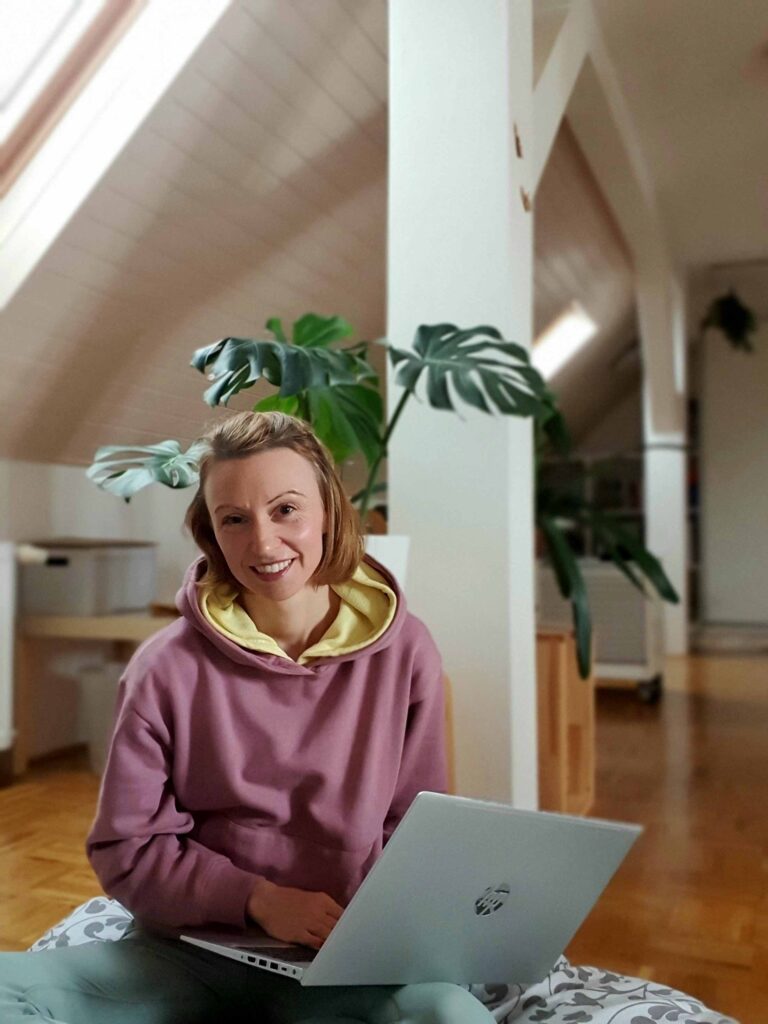
You can also follow my social media profiles for updates and tips about Prague.
1) Local bakery Torto: if you want to taste Czech pastries for great prices
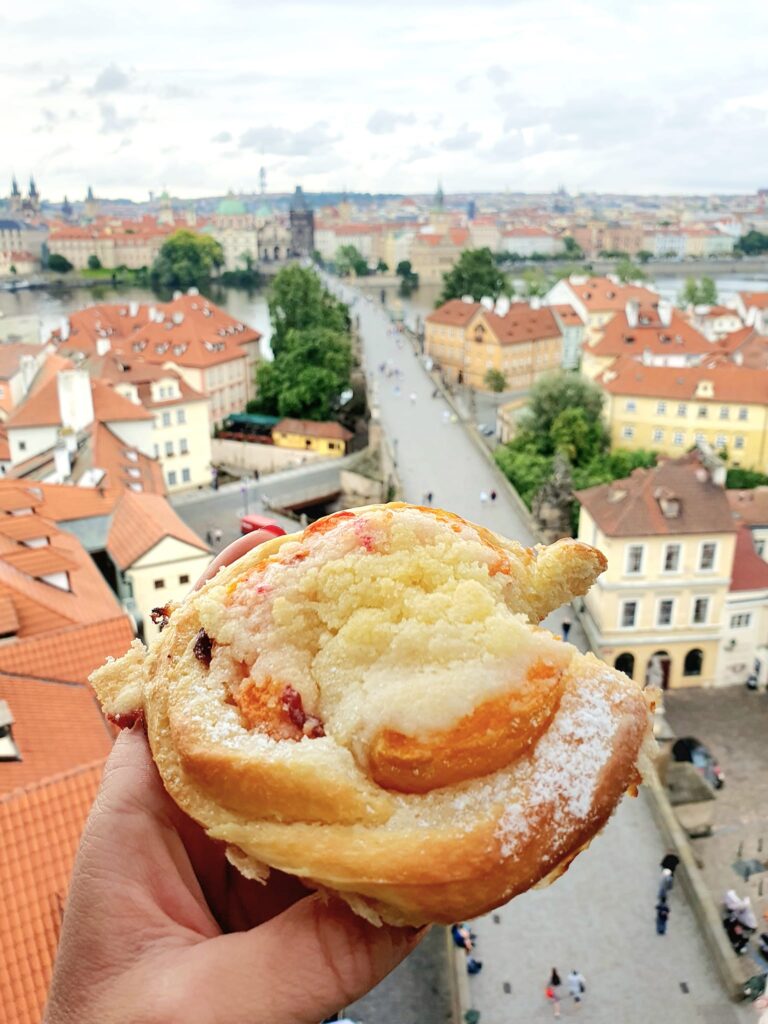
Torto bakery is so tiny that people passing by don´t even spot a shop there. You simply need to know where to grab the handle. Torto is well known among locals living in the Lesser Town but totally unknown to tourists. From what I have seen, tourists prefer one of the biggest edible tourist traps called “trdelník” sold just around the corner. So, if you don’t want to be a typical victim of Prague mass tourism, go to Torto instead. It´s a family run business. Recently open but already loved. They bake small amounts of pastries and desserts every day, so if you come late, don´t be surprised that the shelves and trays are half empty or completely empty:-)
My tip: come early – the sooner, the better and get some warm fresh “koláče”, “buchty with poppyseeds or quark” or “kremrole.” These are my favourites!
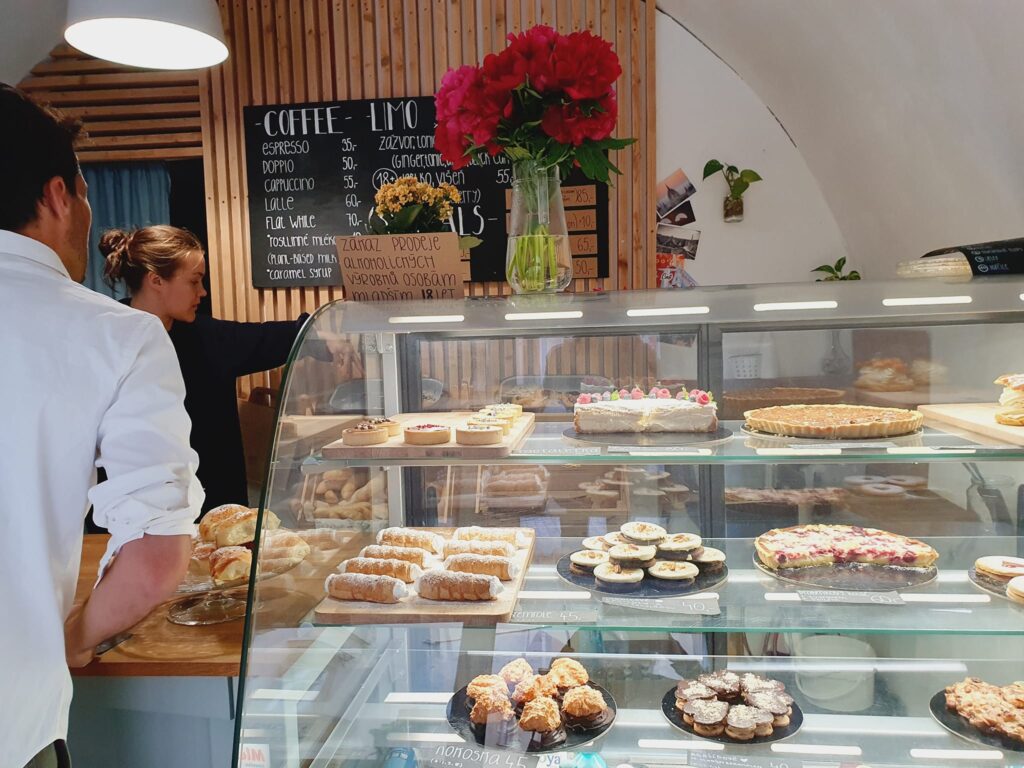
2. See Charles Bridge without crowds around you
Do you think this is impossible? Hehe, maybe when you are on the ground. But what if you are above all the craziness? One of the best things to do in Prague Lesser Town is to climb up the Charles Bridge tower. Just a minute away from the Torto bakery you will find a beautiful entrance (tower) to the Charles Bridge. Did you know that this impressive high tower is open to the public? And did you know that it can often happen that you will be the only ones at the top?
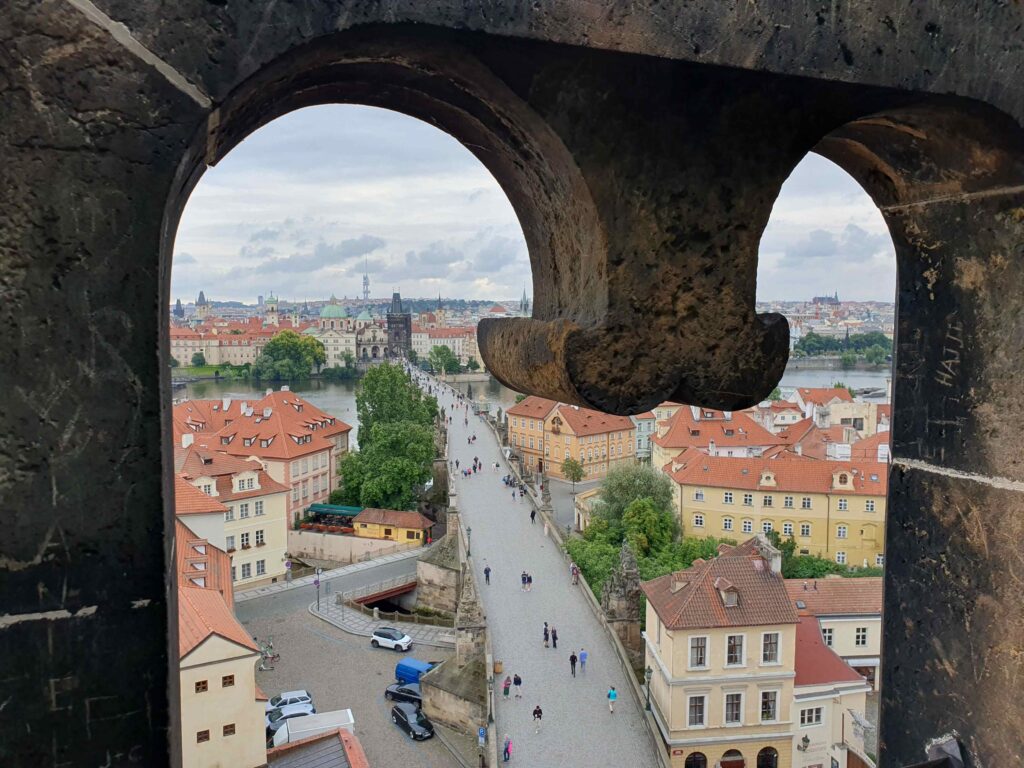
Enjoy the fabulous views, learn about Prague from a different perspective and also enjoy your own space. Away from crowds. From the top you will see: Prague Castle, Charles Bridge, Strahov Monastery, Petřín Tower, St. Nicolas Church, Žižkov TV Tower and all the beautiful red rooftops and cupolas.
My tip: during the first opening hour, there is a 50 % discount on the entry to the tower. Please check the opening hours before you go there. They vary according to the season. Prague Lesser Town bridge tower opening hours you can find here.
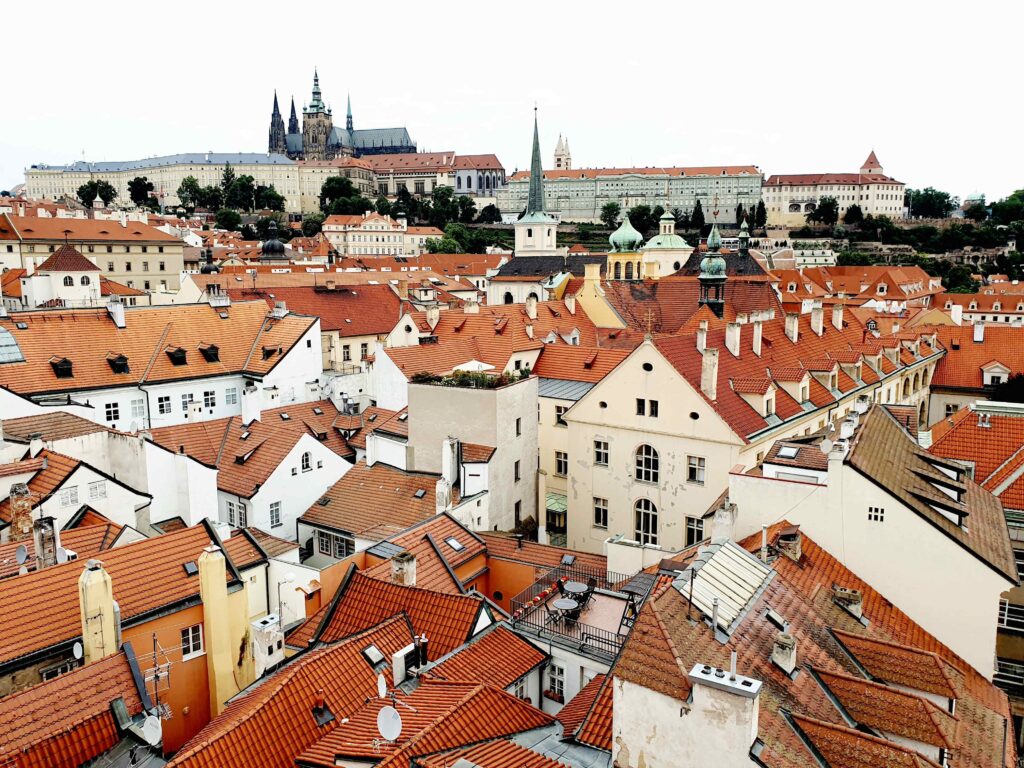
3) The shortest street in whole Prague is in Lesser Town
Maybe you have heard about Prague´s narrowest street which is currently so extremely popular among tourists…I will tell you a secret now. This is a tourist trap and another “discovery” of travel influencers. Please skip it, otherwise you will be standing in a line up like a sheep. For a tourist trap. The “street” is actually a gap between two houses, leading to a very average restaurant (rating 2.3 on Google says a lot).
The shortest street is only 10 minutes away. It´s a real street, it has a name (Jiřího Červeného) and is completely empty. 27 m only for you and your fabulous photos.
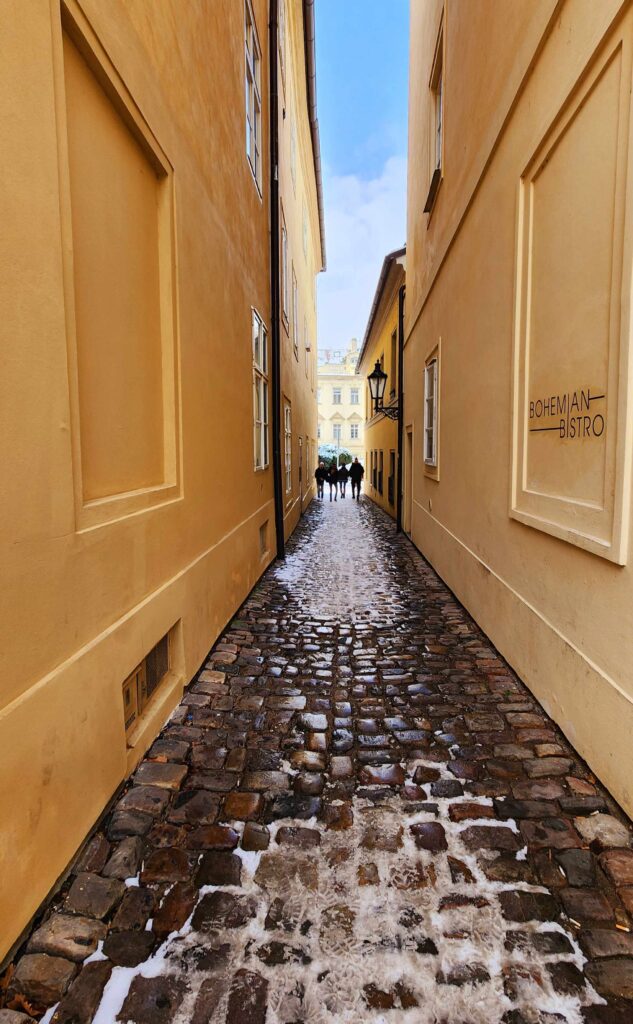
4) Hidden art work of David Černý: Quo Vadis
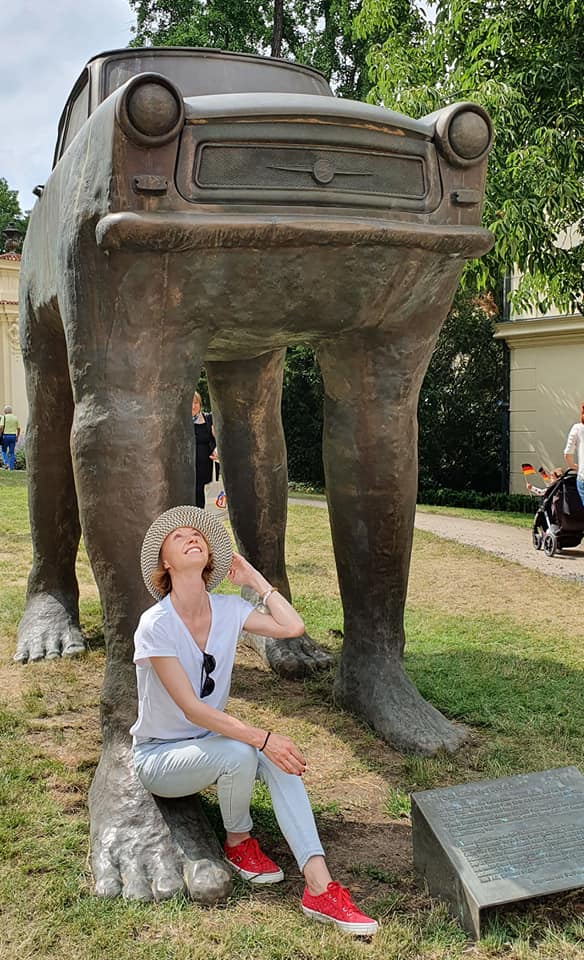
This is my most favourite art work of David Černý: Quo Vadis? (Where are you going?). And I love the story behind it too. This giant thing is a typical East German car called Trabant and you will find it in a garden of the German Embassy (former West Germany Embassy). Trabant is a symbol of the exodus of East Germans escaping their country through Czechoslovakia in 1989 (before the fall of Berlin wall). East Germans were arriving in Prague in these funny duroplast cars and started camping inside the West Germany Embassy until they were given asylum in the West.
My tip: you can´t enter the embassy garden as I did in the picture but you can still see this sculpture through a fence surrounding the embassy. That’s how I took the photo below. The best spot is from the nearby playground. This funny hidden gem is part of my small-group tours.
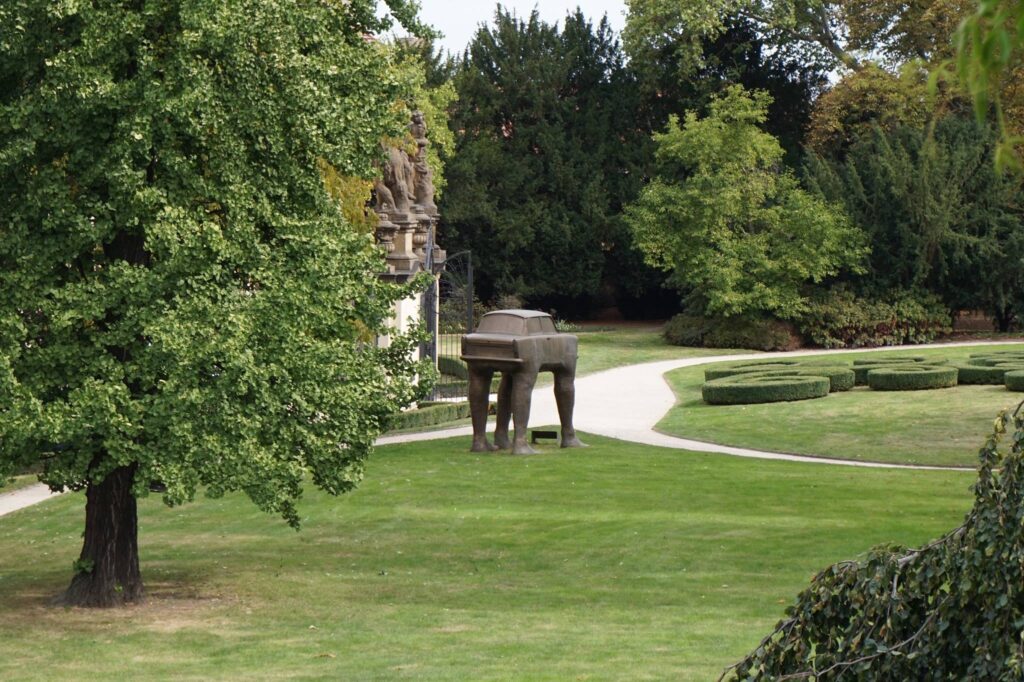
Dana, owner and fully certified guide for Prague Behind The Scenes | small-group tours and experiences.
Please feel free to contact me if you have any questions or want to see Prague with me. With my services I try to support sustainable and respectful tourism , not mass tourism. If this sounds like your style too, I will be happy to hear from you. I am an independent solopreneur, so you will always talk / write directly to me. [email protected]
If you enjoyed my blog and want to support my work and respectful tourism in Prague, you can buy me a coffee. Thank you!

Where to next?
3-hour private tour of Prague downtown with Dana
Where to stay in Prague: 5 tips for hotel locations, sightseeing and friendly downtown neighborhoods
3 hidden gems of Prague food scene (still undiscovered by food bloggers and masses)
Where to exchange money in Prague and how much?
Traditional and fun Czech sweets – easy to pack souvenirs from Prague .
Don´t be a dull tourist: This is a list of the most flagrant Prague tourist traps.
Prague Castle: How to plan the visit? What to see and what to skip? How much does it cost?
Jewish Heritage Europe

Vinohrady, Prague: Forgotten in the Midst of the Mass Tourism
Martin Smok is a Czech researcher, writer and filmmaker who focuses on 19th and 20th century Jewish issues in what is now the Czech Republic and Slovakia. He has scripted two documentary film trilogies, one about the Working group of Bratislava, one about the post-WWII involvement of Communist Czechoslovakia in the Middle East. He curated exhibits including a permanent exhibit on the post-World War II history of Jewish Prague, now installed in the Jubilee Synagogue there. He is also the Senior International Program Consultant for the USC Shoah Foundation, the Institute for Visual History and Education.
In this article, Smok describes his current project — restoring the memory of the all-but-forgotten pre-war Jewish community in Prague’s Vinohrady district — and appeals to readers for assistance.
FORGOTTEN IN THE MIDST OF MASS TOURISM
By Martin Smok
I’m trying to save the memory of a forgotten Jewish community in Prague. It’s a community whose synagogue was the largest and most magnificent in the city, but a community that is almost totally unknown by the millions today who visit the Czech capital.
“What do you mean, an unknown Jewish Community in Prague?” people always ask me. “We know everything about the Jewish Community of Prague,” they say. “We have threaded through the Old Jewish Cemetery and seen the tomb of Rabbi Löw, the Maharal, the creator of Golem; we have visited the Jewish Museum; we have drunk coffee in the Franz Kafka coffeehouse – and some of use have even prayed in the Old-New Synagogue. How could anything be unknown about such a tourist hotspot?”
Nonetheless, the very existence of the largest Jewish Community of interwar Czechoslovakia, in Královské Vinohrady (or Königliche Weinberge in German), a residential district an easy walk from downtown Prague, remains virtually unknown. Try finding it in your Prague guidebook.

The Synagogue and the Community
With the gradual modernization of the Austro-Hungarian empire in the second half of nineteenth century, not only the ghetto walls were struck down, but also those surrounding the city. Prague expanded in all directions. That is where the name of Vinohrady (vineyard hill) comes from: in what used to be fields and agricultural settlements above the city proper, a new town was built: a modern town for the new century. Jews moved there too, from all over Bohemia.
By 1882, the first organized High Holiday services were held in Vinohrady, in an unidentified prayer hall rented by a certain Simon Engel from Roudnice, a town north of Prague. In 1884 Moses Stark from Horažďovice became the first Vinohrady rabbi and established a permanent synagogue. It was located in the main marketplace of the new city, Tylovo square. At the same time, donations were sought for the construction of a proper house of prayer reflecting the growing self-confidence and economical success of the Vinohrady Jewish Community – which was legally established in 1890. In 1894, a small structure was built, in a plot of land that was to become Sázavská street. Two years later, with major loans from Czech regional banks, a Great Temple designed by the famous architect Wilhelm Stiassny was festively opened right next to it: with two imposing towers and a huge arch over the portal, it was one of the biggest synagogues in the world. The small synagogue continued to serve as a winter prayer hall.(Stiassny later later designed the still-existing Jubilee synagogue in Prague, as well as a number of other ornate synagogues in central Europe.)

Looking back, the temple building may have made too much of a statement for the times. Its two towers marking the Vinohrady skyline soon attracted the wrath of Czech anti-Semites: “Comparing the old and new Bohemia, [one] could not fail to think of St. Vitus Cathedral above the Lesser Town (Mala Strana) and the Jewish synagogue in Vinohrady. While the old Prague lives in the shadow of the cross, its new district is dominated by two six pointed stars. Indeed, the Jews of today are a sort of master that Czech gentry of the past never was,” wrote one Czech daily.
The first attempted physical attack on the synagogue came in late 1897, during nationalist pogroms triggered by the recall of a language reform that was to have given more power to the national minorities of the Austro-Hungarian empire. Jews (who spoke both Czech and German) found themselves caught in middle of a conflict between German and Czech nationalists. Seen by Czech nationalists as German agents, Jews were attacked by Czech mobs throughout Bohemia. In Vinohrady, most Jewish-owned shops were looted and had their windows smashed; some were set on fire. Even the Jewish orphanages were not spared. The situation calmed down only after the declaration of martial law and the arrival of the Army. The German-language newspaper Prager Tagblatt recorded a dramatic incident from December 2, 1897:
“An attack was also planned against the Vinohrady synagogue. Shortly afterwards the arrival of a crowd armed with stones that gathered in front of the building, somebody called out: ‘The Vinohrady Jewish Community is Czech! Let’s leave the synagogue alone.’ And while shouting Slava! and Nazdar! [Czech slogans] the crowd massed in front of the temple eventually retreated from the synagogue.”

In fact, the Vinohrady Jewish community was among the first to adopt a strictly dual language principle: both German and Czech were the languages of its office – and of its prayers. Thus the services and sermons in the temple alternated among Hebrew, German and Czech. For the rapidly assimilating Vinohrady Jewry the imposing synagogue building became a place to be seen. Getting married in the Vinohrady temple was a powerful statement of social status. The synagogue choir included opera stars of the New German Theater of Prague, and services were treated as musical performances. At the same time, the wealthy community cared for its less fortunate: its ladies’ benevolent society, Frauverein , was established already in 1887 and its general assistance society, Hilfsverein, in 1897 . There were several Jewish orphanages and other social institutions in Vinohrady, too. And in the interwar years, the community financially supported various youth movements, an old age home in Frankfurt, a sanatorium in Merano, and Jewish schools in what today is Ukraine. For those interested in Kafka it is worth noting that the parents of Julie Wohryzek, with whom Kafka had a romance, lived in the caretaker’s flat next to the main building of Vinohrady synagogue.
The creation of Czechoslovakia in 1918 brought another wave of pogroms to Vinohrady, but also a gradual generational change: first a new chief cantor Shaye Sud arrived from Miroslav, then a new rabbi, Dr. Gustav Sicher, a leading figure of Czechoslovak Jewry until 1960, came from Nachod. The synagogue got a new heating system, the residences of the rabbi, the cantor and the custodian were enlarged, and some of the most redundant decorations were removed from the ornate facade. Nobody could have imagined that cantor Sud and rabbi Sicher would be the last ones the Vinohrady community would ever have.

From 1938, after numerous attempts to handle the influx of Jewish refugees from Germany, Austria and the Czech borderlands after the creation of the Protectorate and the promulgation of the anti-Jewish laws, the Jewish community offices next to the synagogue became one of the collection centers of formerly Jewish property. This is where Jews of Vinohrady were ordered to bring their fur coats, radios, and other items they were forbidden to own anymore. Cantor Sud escaped to America and Rabbi Sicher left for Palestine, and an emergency orphanage for small children, or kinderheim , was established in their apartments adjoining the temple. According to the testimony of Edita Flusserova, one of the nurses there, the first inmates were children of refugees from Germany. The orphanage was managed by Hanka Epsteinova, a true hero of social work with children during the Holocaust. The writer Ruth Bondy, who worked in the Sazavska street orphanage as a cook, has recalled the incredible energy and strength of Epsteinova, and her devotion to the children until her murder in Auschwitz. Unfortunately, no photographs of this forgotten heroine have been found yet.

After the start of deportations of Jews from Prague on October 16, 1941, the kinderheim was moved to another location, and the entire complex of the Vinohrady synagogue became “storage No. 7” that held the stolen property of deported Jews, to be further managed by the Nazi Treuhandstelle organization. The orphanage premises held “paintings, graphics, frames and bicycles”, while the main building was used for storing furniture. The cellar was filled with cooking utensils and similar household items.

On Valentine’s Day, February 14, 1945, at a time when the majority of Jews of Prague had already been murdered, the Vinohrady synagogue was hit by an incendiary bomb during an Anglo-American air raid on Prague. The main hall, filled with furniture, burned down completely — the German authorities allegedly barred Czech firemen from dousing the fire. The small synagogue, front façade, towers, and the living quarters that used to house the kinderheim were saved. Three months later, the few survivors who returned from the camps were faced with a question what to do with the burnt-out shell of the synagogue that was a symbol of a world that did not exist anymore. As anti-German sentiment was running high again, and the synagogue was seen by the Czech authorities as a symbol of Jewish Germanization, a proposal was made by the City of Prague to make it into a gym and sports arena for the Czech nationalist sporting organization Sokol. Another proposal came from the surviving Jewish Community: to demolish the synagogue and replace it with several residential houses, of which one would be given to the Jewish community to house survivors – and a small prayer hall would be allowed to exist there too.

With the onset of Communist rule all these proposals were scrapped. In the spring of 1951 the synagogue was demolished. When the Jewish community of Prague expressed interest in using the bricks resulting from the demolition to restore the walls of the old Jewish cemetery in the Liben district, the authorities rejected the request – they responded that the bricks were strategic material belonging to the state. All traces of the synagogue complex in Sazavska street were removed, and the land and all other formerly Jewish social institutions in Vinohrady were nationalized. (You can find the site of the complex today with this link: http://goo.gl/maps/P9qdb )

In 2011, the city district of Prague 2 in cooperation with the Jewish Museum in Prague decided to sponsor a research project examining the diverse Jewish past of what used to be Královské Vinohrady – today split into parts of the districts Prague 2, Prague 3 and Prague 10. This has entailed scouting the world for the last witnesses, photographs and artifacts that could help reconstruct the lives of a proud and prosperous Jewish population that also lived on the borderline between national, linguistic and religious identities.
The research so far hints that most of the relevant material has survived in countries of immigration, not in Prague. Between 1938 and 1940, the Jewish inhabitants of Vinohrady escaped by the hundreds to Palestine – and to Ecuador, Bolivia, Colombia, Cuba and the United States. Only those who escaped could have saved family archives that may help us to fill in the blanks.
So now I have a request .
If your family archives do hold any material that could help capture the history of the Jewish presence in Královské Vinohrady/Königliche Weinberge, please contact me at [email protected] , or join the Vinohrady research project Facebook group at https://www.facebook.com/groups/454118427972251/
- Commemoration: Reflections on Memorializing the Jewish community of Amiens, France
- Documentation: Simon Geissbuehler in Romania, Ukraine & Moldova
- Dovid Katz: On the Use and Misuse of Jewish Gravestones and Memory
- From “Atlantis” to …? The past and present of Jewish Krakow in the second decade of the new millennium
- Genealogy — Marla Raucher Osborn Recounts a Success Story
- Novelty vs Loyalty in Cultural/Heritage Tourism?
- Samuel Gruber on Why Preserve Religious Heritage Sites
- Sergey Kanovich: Holocaust Museum and Holocaust of Memory
Comments are closed.
Prague.eu The Official Tourist Website for Prague
Tourist Information Centres
Do you need to find your way around Prague? To arrange a sightseeing tour, or tickets for cultural events? Then stop by one of our Information Centres. We provide tourist information and arrange for all kinds of diverse and high-quality tourist services. You can also get some original gifts to bring back, from our Prague arts and crafts people's limited editions, which you can buy at the TICs downtown. But you're always welcome just to pop in and tell us how you like Prague...
Where to find us
Prague visitor centre - na můstku.
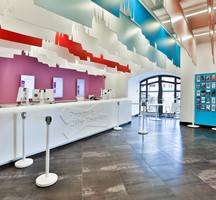
Official tourist information centre of the City of Prague, so called Visitor Centre, run by Prague City Tourism. The latest tourist centre is located in the very centre of the city, at the crossroads of Na Můstku and Rytířská streets. It also includes an exchange office with clear exchange rates and fees, a small rest area for visitors and free Wi-Fi access.
Prague Visitor Centre - Staroměstská radnice (Old Town Hall)
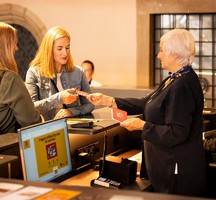
Official tourist information centre of the City of Prague run by Prague City Tourism. Located in the historical Old Town Hall it is available for tourists 365 days a year.

Prague Visitor Centre – Prague Castle
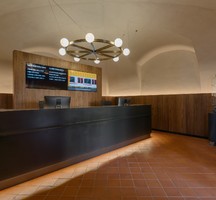
The official Tourist Information Centre for the City of Prague is operated by Prague City Tourism. It is open to local and foreign visitors and Prague citizens 365 days a year. The Tourist Information Centre is located in the 3rd courtyard of Prague Castle.
Petřín Tower Information Centre
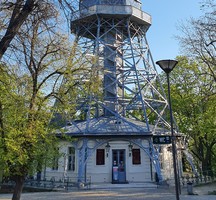
Prague City Hall’s official Information Centre is run by Prague City Tourism. The Information Centre is located directly on Petřín Tower premises and is open for domestic and foreign visitors and Prague residents 365 days a year.
Prague Visitor Centre - Václav Havel Airport Prague - Terminal 1

Official tourist information centre of the City of Prague, so called Visitor Centre, run by Prague City Tourism. Located in the Terminal 1 arrival hall.
Prague Visitor Centre - Václav Havel Airport Prague - Terminal 2

Official tourist information centre of the City of Prague, so called Visitor Centre, run by Prague City Tourism. Located in the Terminal 2 arrival hall.
- Transportation
- Staré Mesto & Josefov
- Tours & Trips
- Traveler Ressources
Prague Tourist Office: Your Gateway to Exploring the Heart of Czech Republic 🗺️
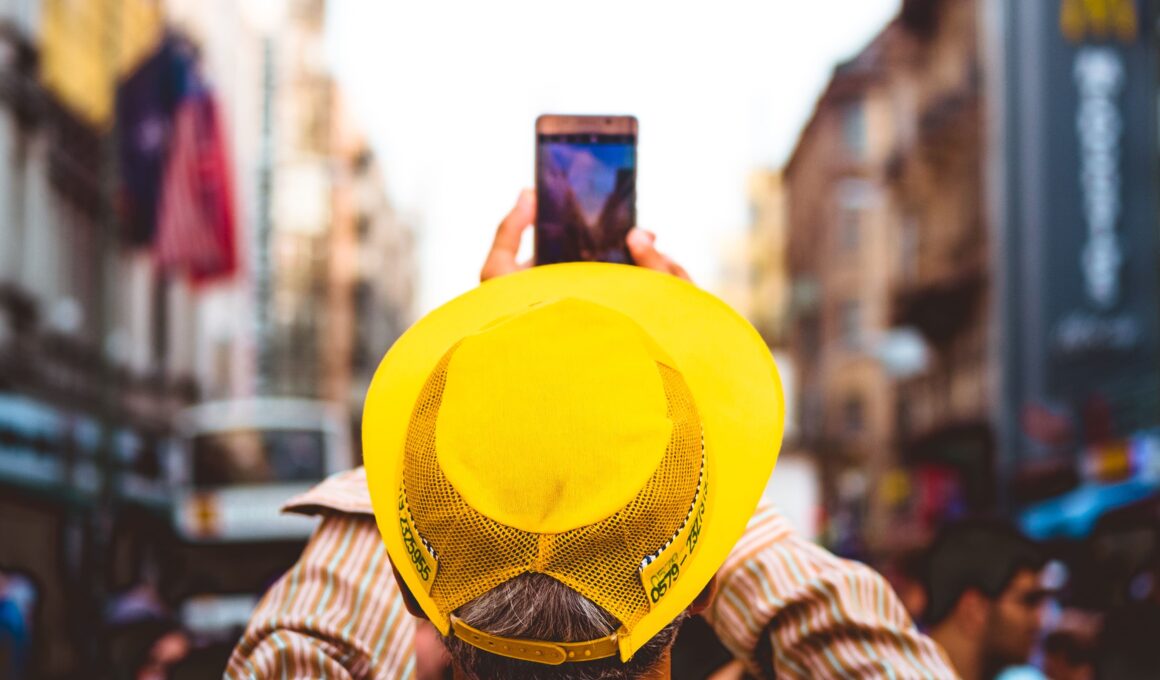
Table of contents Show
The tourism in prague – numbers & info, prague main tourist information center (staroměstská radnice), prague airport tourist information center, main train station tourist information center (hlavní nádraží):, holešovice tourist and information center (centrum holešovice):, na můstku tourist and information center:, tourist information office prague services.
The Tourist Office in Prague serves as a guide for visitors looking to discover the Czech Republic’s treasure troves. This extraordinary facility is a lot more than a resource for knowledge; it is a portal to a world of memorable events, history, and culture.
Visiting the Tourist Office in Prague is like delving into an engrossing novel. The helpful and cheerful staff will act as your personal tour guides throughout your stay, answering your questions, making suggestions, and providing you with insider information to make the most of your time in the city.
There is truly something for every type of Prague tourist. The Prague tourist information office should serve as your guide, pointing you in the direction that best suits your interests. The professionals here will tailor an unforgettable adventure to your specific interests, be they cultural or culinary.
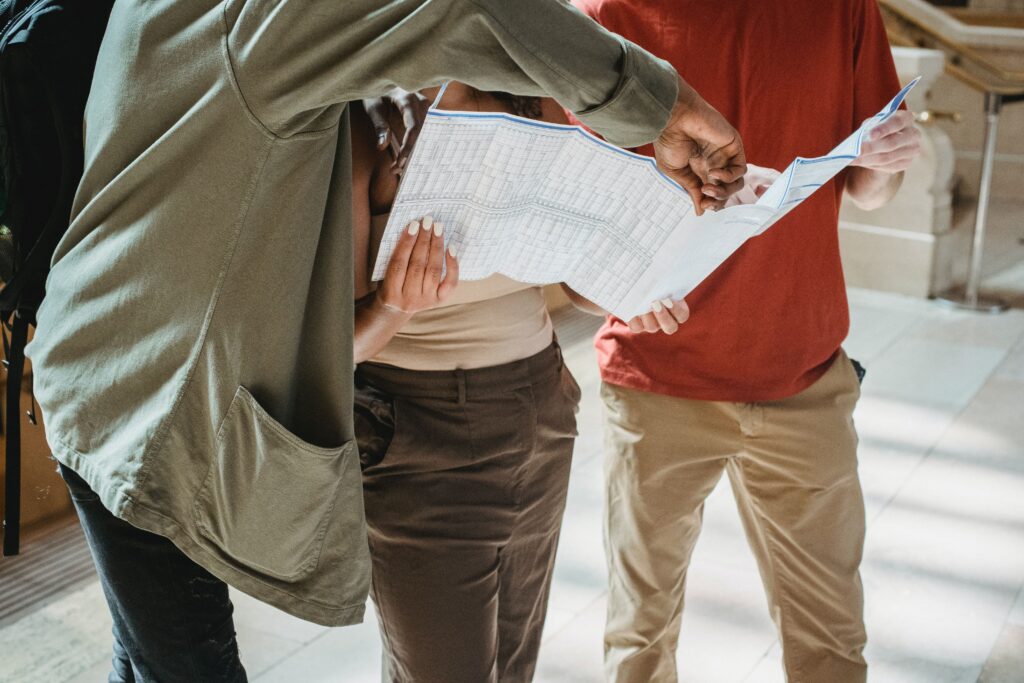
Without question, Prague tourism is a major contributor to Praga city ‘s vitality and international character. When you explore the city’s hidden treasures, partake in its customs and traditions, and stroll down its old streets, you become an intergral part of the city’s rich history and add to its enduring allure.
The Czech Statistical Office (CZSO) has released data showing that there were 3.8 million visitors staying in Czech Republic hotels during Q1 2023.
Of all the foreign visitors visiting the Czech Republic in the first three months of 2023, 188.3% were Germans, who accounted for 438,000 visits.
The next largest group was Slovaks, with 154,000 people moving there, or 158.8 percent of the entirety, followed by Poles, with 133,000 people moving there, or 170.5 percent of the total.
Prague Tourist Information Office Locations and Accessibility
The tourist information offices in Prague ought to be the first place you visit when you arrive in the Czech Republic’s capital city. All across the city, visitors may find these information and service centers that are a great resource. We should check out the convenience of these visitor centers and see where they are located.
Location : It may be found at Staromstská radnice (Old Town Hall), Staroměstské náměstí 1/3, 110 00 Staré Město
Accessibility: The accessibility of its central location makes it accessible by both foot and public transportation. The Old Town Hall is a landmark in the center of Prague’s ancient Old Town.
Location: Terminals 1 and 2 of the Vaclav Havel Airport in Prague
Accessibility: These centers are placed in an easily accessible area of the airport, making them the first point of contact for many Prague tourists .
Location: Nové Město, Wilsonova 300/8
Accessibility: In the city’s central train station, this office is convenient for visitors coming to Prague on a train.
Location: Dukelských hrdinů 47, Holešovice, 170 00 Prague 7
Accessibility: Situated in the exciting Holeovice district, this center caters to visitors to Prague.
Location : Rytířská 537/31, 110 00 Staré Město
Accessibility: The convenient location near Wenceslas Square makes this hub simple to reach by both public transportation and foot. Also explore some of the best hotels in Old town square
Any Tourist Office in Prague is here to help you have a wonderful time in the Czech city. Some of the services that will be available to you are as follows:
- Information and Assistance
- Restaurant Recommendations
- Guided Tours
- Public Transportation Information
- Event and Ticket Sales
- Multi-language Support
- Maps and Brochures
- Luggage Storage
- Accommodation Assistance
- Booking and Reservations
- Sightseeing
Related Posts

Czech Dubbing Stars: Voices that Shape Our Viewing Experience

The Ultimate Guide to Prague’s Best Bakeries
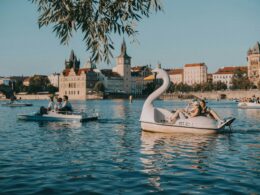
Prague Easter Holiday: A Guide to Celebrations and Travel

Easter Weekend in Prague: A Celebration Guide
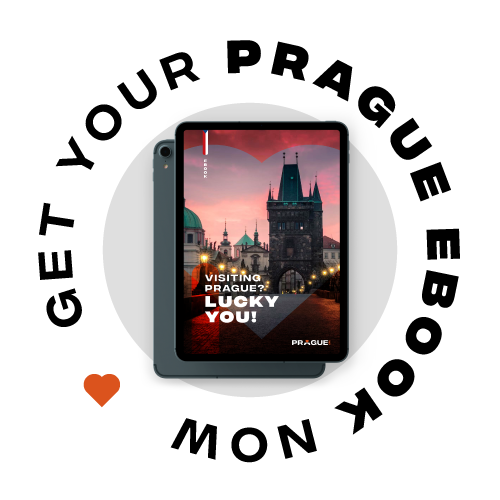
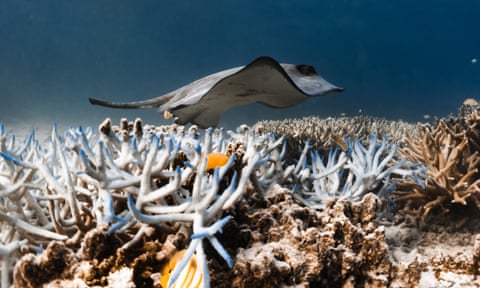
‘Tourists ask a lot of questions’: Great Barrier Reef guides face up to bleaching tragedy
Tour boat divers have long borne witness to mass bleaching events. Once reluctant to wade into discussions about global heating, they are now opening up
- Get our morning and afternoon news emails , free app or daily news podcast
“You can see it on their faces,” says scuba diving instructor Elliot Peters. “There’s definitely some remorse and sadness.”
Peters works at a resort on Heron Island in the southern part of the Great Barrier Reef and, in recent weeks, he’s had to tell curious guests why so many of the corals around the island are turning bone white.
The reef is in the middle of its fifth mass bleaching event in only eight years – an alarming trend driven by global heating in a year that has seen record global ocean temperatures.
Peters has never seen a mass coral bleaching event up close before, but this summer he’s seen ancient boulder corals that can live for hundreds of years bleaching and showing signs of death.
“If anything it’s motivating me,” he says. “It’s opening the doors to get people talking about climate change and the health of the reef. People are thanking us for telling the truth about what’s going on here.”
The Great Barrier Reef is a major export industry for Australia, with one 2017 report estimating the reef supports 64,000 jobs and contributes $6.4bn to the national economy.
But as the impact of global heating on the reef made global headlines in 2016 and 2017, tensions in the tourism industry started to emerge. One tourism head called stories of catastrophic bleaching a “great white lie”.
“The reef is the most significant natural attraction that this country has to offer,” says Daniel Gschwind, a professor at Griffith University’s tourism institute and the chair of the committee that represents reef tourism to the government’s Great Barrier Reef Marine Park Authority.
“It’s a challenge because as a phenomenon, [global heating] is affecting what we ultimately sell.”
Sign up for a weekly email featuring our best reads
‘If the reef dies, we die’
Gschwind says for many years, tourism operators were reluctant to talk to guests about the threat of climate breakdown.
The reef has experienced mass bleaching in 2002, 2016, 2017, 2020, 2022 and now again in 2024. But for an ecosystem the size of Italy, the effects are not uniform.
What is coral bleaching?
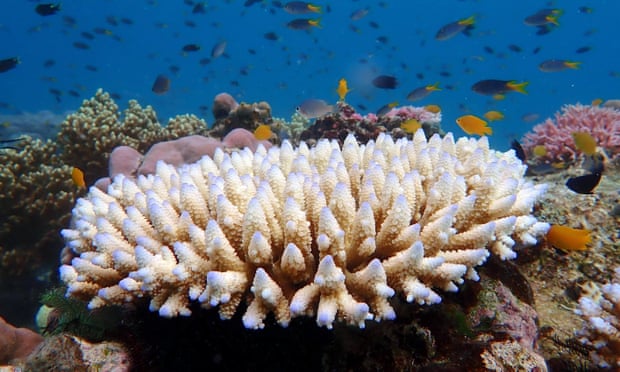
Coral bleaching describes a process where the coral animal expels the algae that live in their tissues and give them their colour and much of their nutrients.
Without their algae, a coral’s white skeleton can be seen through their translucent flesh, giving a bleached appearance.
Mass coral bleaching over large areas, first noticed in the 1980s around the Caribbean, is caused by rising ocean temperatures.
Some corals also display fluorescent colours under stress when they release a pigment that filters light. Sunlight also plays a role in triggering bleaching.
Corals can survive bleaching if temperatures are not too extreme or prolonged. But extreme marine heatwaves can kill corals outright.
Coral bleaching can also have sub-lethal effects, including increased susceptibility to disease and reduced rates of growth and reproduction.
Scientists say the gaps between bleaching events are becoming too short to allow reefs to recover.
Coral reefs are considered one of the planet’s ecosystems most at risk from global heating. Reefs support fisheries that feed hundreds of millions of people, as well as supporting major tourism industries.
The world’s biggest coral reef system – Australia’s Great Barrier Reef – has suffered seven mass bleaching events since 1998, of which five were in the past decade.
In any given year, some reefs escape the heat stress, some turn white but then regain their colour, while some corals will die. Bleaching can make corals more susceptible to disease, slow their growth and impede their reproduction.
Government scientists were this week carrying out in-water and aerial surveys to assess the bleaching across the whole reef, but it could be weeks, or even months, before there’s a clear picture of how severe this year has been.
The long-term prognosis for the reef is not good. As global heating continues, the chances of ever more intense heat stress events is rising.

“It’s difficult to communicate a bleaching event accurately,” says Gschwind. “With an event like this one, by the time it’s communicated to a consumer in London or Shanghai the message received could be ‘the reef is not worth visiting any more’. That’s the challenge to the tourism industry and it’s why many operators struggle with this.”
Divers on tourism boats are often the first to raise the alarm, and this year operators have sent more than 5,000 observations to the marine park authority.
“That’s where the industry and operators see their social role. They’re the communicators of this story – operators are the sentinels,” says Gschwind.
“They see what global warming is doing to the natural environment that we all depend on. If the reef dies, then we die. We’re the early warning system for what’s going on on the planet.”
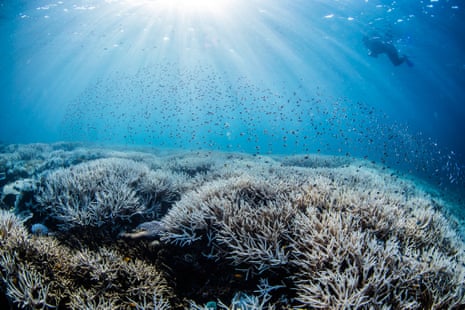
The emotional toll of a bleached reef
Since back-to-back mass bleaching events in 2016 and 2017, the park authority has worked with the tourism industry to establish Master Reef Guides, a growing cohort of more than 120 dive professionals trained by scientists and traditional owners on how to communicate the health of the reef and its threats.
Fiona Merida, a marine biologist and director of reef education and engagement at the park authority, says giving tourism operators detailed information on what was happening at the sites they visited “takes the emotion out of it” and gives them confidence to talk to visitors about bleaching.
But she says some reef guides are themselves suffering “ecological grief” this year at seeing the places they love suffer. Reef guides have established a “buddy check” system where guides can check in on each other’s mental health.
Yolanda Waters is founder of advocacy group Divers for Climate and has been diving in the southern section of the reef in recent weeks.
after newsletter promotion
“It was bleached coral as far as the eye could see,” she says. “I didn’t want to get back into the water. It’s a restorative place for me and to not want to go back in is awful.”
Waters is a former dive instructor and as part of research at the University of Queensland , she has interviewed more than 650 reef visitors in recent years.
“I noticed how difficult these conversations were,” she says. “Tourists ask a lot of questions and it can feel confronting if people have paid $300 to go on to the reef. A big question tourism gets asked is: ‘Is the reef dying? Tell me.’
“The reality is far more complicated, but they want to know from the people who see the reef every day.
“We found [tourists] are actually open to hearing about climate change. In fact the majority weren’t only open to the information, but wanted more. And they wanted to know what they could do.”
“It’s a tricky line: how do we do this in a way that motivates action and does not turn people off? But you have to face the reality – there is still so much to save, and that gets left out a lot.”
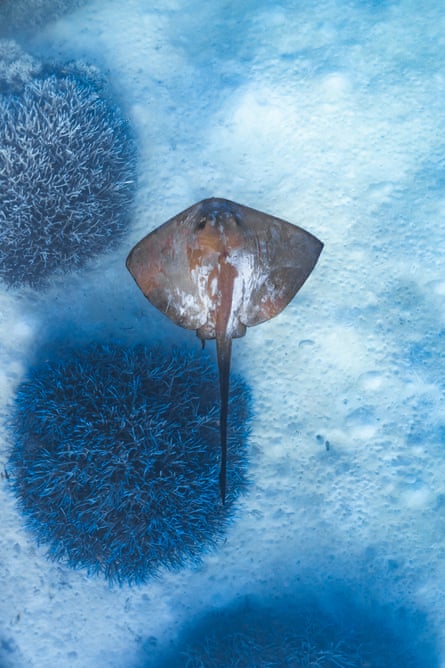
‘The time is now’
Tahn Miller has been working as a dive instructor and guide at Wavelength Reef Cruises in Port Douglas in far north Queensland for 15 years.
Miller remembers hearing stories from a decade ago of how some dive guides in other parts of the reef would be told not to mention climate change to guests for fear of perpetuating ideas the natural treasure was either dying or not worth visiting.
But he says there’s been an evolution in the industry, and now far more divers are feeling empowered to talk to visitors about the climate crisis – but only if the visitors want to hear it.
“You have climate sceptics in every group, but I find that’s becoming less and less,” he says. “I tell them I’m not there to change anyone’s minds, but this is what I have witnessed. I try and be honest with them.”
Miller says after the 2016 bleaching, he saw reefs recovering. But his optimism has been eroded in recent years.
There are several tour operators that are also running small reef restoration projections in the areas they visit, including replanting corals.
“Some of the corals I’ve planted – hundreds of them – have already died [this summer],” he says.
“The time is now … we have to make change because if we don’t, we lose massive expanses of reef.”
Back on Heron Island, Peters says he gets stopped by tourists asking him what they can do to help the reef.
“I start by getting them to acknowledge their appreciation for the reef and that we have to do more. I leave them with one or two tips,” he says.
“I say they should ‘use their voice’ and find out about the policies of the people they might vote for. And I ask them to think about where their money is being held – is it in a bank that invests in fossil fuels?”
- Great Barrier Reef
- Climate crisis
- Marine life
Most viewed
Barcelona is increasing its tourist tax next week - here’s how much you’ll have to pay from April
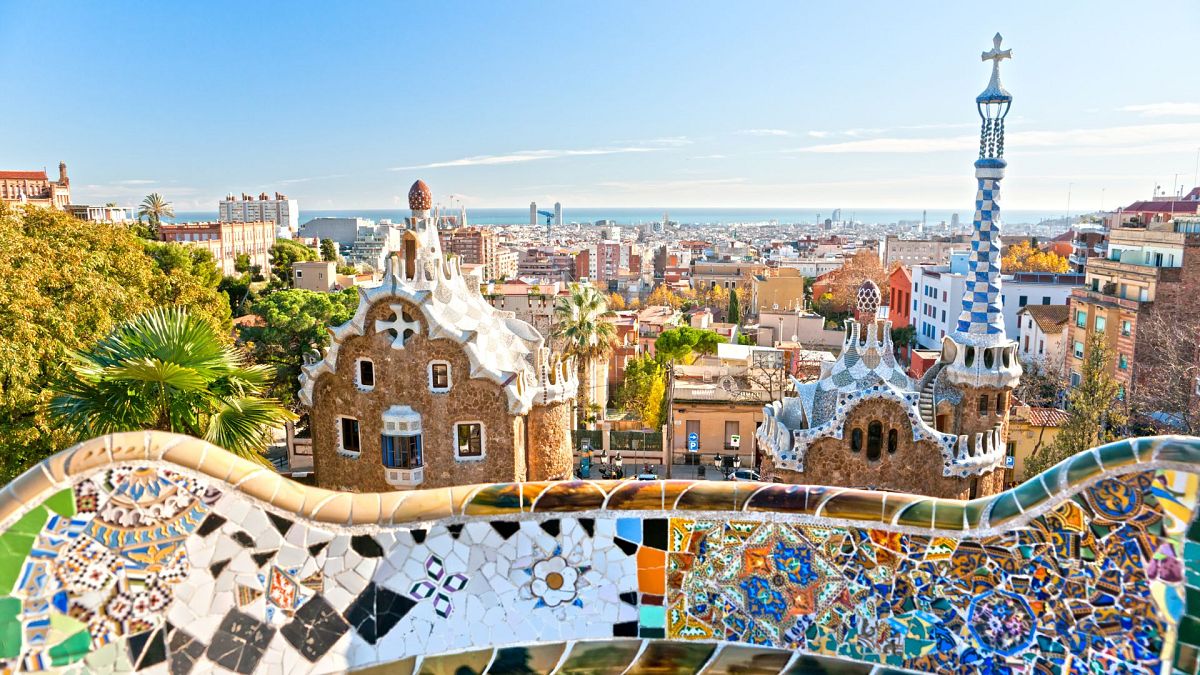
The Spanish city first introduced an extra tourist tax in 2012 to attract ‘quality’ tourism.
Barcelona’s tourist tax is set to rise once again on 1 April.
Since 2012, the visitor hotspot has added an extra fee on top of the region-wide tourist tax.
In 2022, city authorities announced that the fee would be increased over the next two years.
The city’s surcharge varies depending on the type of visitor accommodation and is only levied on official tourist lodging.
Barcelona is Spain ’s most visited city and continues to struggle with overtourism.
How much is Barcelona’s tourist tax?
Visitors to Barcelona have to pay both the regional tourist tax and the city-wide surcharge.
The regional tax varies depending on the type of accommodation you are staying in. For four-star hotels it is €1.70, for rental accommodation like Airbnb it is €2.25, and for five-star and luxury hotels it is €3.50.
Cruise passengers spending less than 12 hours in the city pay €3 to the region, while those spending more than 12 hours pay €2.
The city tax, which applies to a maximum seven-night stay, has been steadily increasing. In April 2023, it rose from €1.75 to €2.75 for all types of stay. From April 2024, it will increase once again to €3.25.
What does that mean for accommodation prices in Barcelona in 2024?
As of 1 April 2024, visitors to Barcelona will have to pay €3.25 to the city on top of the regional tourist tax - an increase of €0.50 per night.
That means guests in five-star accommodation will pay a total of €6.75 per night - €47.25 per person for a week’s stay.
In rental accommodation, the fees add up to €5.50 per night or €38.50 for a week-long stay, on top of the nightly cost of the accommodation.
Cruise day-trippers will pay €6.25. The idea behind this is to encourage “quality” tourism over big numbers, according to the city mayor.
- Plaza de España: Seville’s plan to charge entry fee for iconic square sparks backlash
- Spain’s digital nomad visa one year on: How are remote workers and locals getting along?
Why does Barcelona have a tourist tax?
Barcelona’s authorities have said the increased tourist tax aims to attract ‘quality’ tourism over big visitor numbers.
The city sees an average of 32 million visitors a year, many of whom arrive on cruise ships.
In 2022, the Catalan capital launched new measures to curb disruption from guided tours including noise restrictions and one-way systems.
The hike in the tourist tax, which is divided between Barcelona ’s Generalitat and the City Council, will also bolster the city’s budget.
- Overtourism: From Venice to Marseilles, here’s how European travel hotspots are tackling overtourism
Authorities hope the fee will bring in as much as €100 million in 2024.
“The economic data for tourism in 2019 is already increasing, not in the number of tourists, but in the amount of income from tourism in Barcelona,” deputy mayor Jaume Collboni said.
“It was the objective sought: to contain the number of tourists and increase tourist income because our model is no longer mass tourism but quality tourism, which adds value to the city.”
The council said the proceeds would be used to fund the city’s infrastructure, including improvements to roads, bus services and escalators.
What other Spanish cities have a tourist tax?
Barcelona isn’t the only tourist hot spot in Spain taxing visitors to cope with their impact.
The Balearic Islands (Mallorca, Menorca, Ibiza , Formentera), charges a nightly fee of €1-4 for each holidaymaker aged 16. Known as the Sustainable Tourism Tax, it is used to promote better tourism practices and conserve the islands’ nature.
Valencia planned to introduce a similar measure at the end of last year, but it was scrapped following the 2023 elections. It would have seen travellers pay between 50 cents and €2 per night for up to seven nights.
You might also like
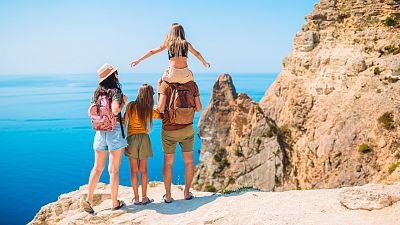
What are the rules on taking kids out of school for a holiday?
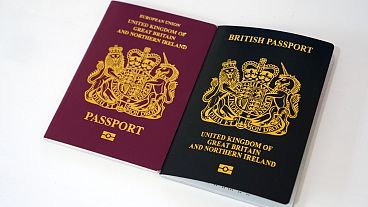
UK travel warning: Why you should renew your passport before April
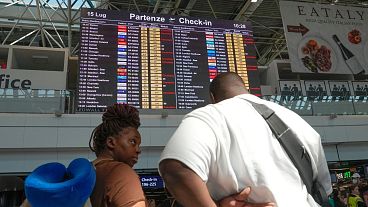
Italy, UK: Travel strikes planned for March
‘Overall cost of doing business is outrageous’: R.I. hospitality leader talks Washington Bridge fiasco, shoddy tourism budget, and more
Heather singleton is the interim ceo of the rhode island hospitality association, which advocates for restaurants and the lodging industry around the ocean state..

Restaurant owners and hoteliers have had to face a tough few years during and after the COVID pandemic that include a persistent staffing crisis, rising costs, a disastrous supply chain problem, changing tastes , and tricky red tape that can make owning and operating a business even harder.
Earlier this year, Rhode Island Hospitality Association president and CEO Dale Venturini announced she would retire after nearly four decades leading the trade group. Heather Singleton, the association’s chief operating officer, stepped up to serve as the association’s interim CEO in the meantime, and spoke about the challenges the restaurant and lodging industries face in 2024, legislative priorities, and her own future.
Advertisement
Q. At no surprise, the Washington Bridge has to be rebuilt. We know this is already decimating businesses . What is the association focused on?
Singleton: For a while, everyone was taking this “wait to see” what the results are approach. Now, we know it’s going to take a couple of years to get back to normal. We’ve started listening sessions with business owners to hear directly from them on what kind of help they’re really going to need over the next few years, and we plan on working with elected officials to help support those businesses. But immediately, RIHA is relaunching our Employee Relief Fund , which is for employees that are currently facing an unexpected financial hardship. This fund initially came about because of COVID, but we still had some money left in that fund so we’re going to be reopening that.
Q. How much could an employee receive from this fund?
A. It’s up to $1,000. The United Way of Rhode Island and the Rhode Island Foundation had helped us get that fund set up during the pandemic, and we received a lot of donations to continue feeding it. During COVID, these funds are what helped some employees who were laid off. When folks returned to work, we decided to turn it into a relief fund that has been used for emergencies.
Q. What kinds of emergencies?
A. An employee from Connecticut was living and working in Rhode Island when her parents contracted COVID pretty badly and it was not a good situation. She just needed gas money in order to get back and forth from Rhode Island to Connecticut to help her parents. The relief fund was able to help with that.
Q. Other than the bridge, what are the most pressing concerns your members face in 2024 in Rhode Island?
A. The overall cost of doing business is outrageous. Everything from business insurance, utilities, goods, transportation fees, labor, rent, and other expenses are all much more expensive.. If sales are up, the money is just going out the back door. If sales aren’t up, businesses are having a hard time keeping up.
Q. Most states spend an average of $20 million on tourism marketing. Ours is only $5 million, but much of our economy depends on the hospitality industry. What’s with the divide?
A. We work with all of the tourism regions in Rhode Island, and consider them the “front of the house” while the association is the “back of the house.” We’re focused on a lot of the advocacy, lobbying efforts, and workforce issues; the tourism regions are in charge of promoting the destination and bringing folks in. I know that $5 million is not a lot. We’re trying to bring in leisure travelers, business travelers, and people coming in to visit friends and family. That’s three different sectors of tourism. We need a lot more than $5 million.

Q. What is the association planning to advocate in front of lawmakers this year?
A. Everything is on the table. We’re tracking close to 150 pieces of legislation right now that have been introduced in this session. [For example, there are two pieces of legislation that have been introduced in the General Assembly that could force restaurants to stop charging service fees .]
Q. Happy Hour was canceled in Rhode Island in 1985. Will it ever return? Should it?
A. We haven’t taken a position on this. We surveyed our membership and the results showed business owners were split right down the middle. Some were very supportive of it; others felt it wouldn’t help them.
Q. Are you looking to serve as RIHA’s permanent CEO?
A. Yes, I’ve applied. I’ve been here for 26 years, and with Dale as my mentor and coach over the years, it’s always been my goal to lead the association.
Q. If you were selected, what are your yearlong goals for RIHA?
A. First thing is to deal with the crisis at hand: the Washington Bridge crisis. I’m only a few weeks into the job as interim CEO and the bridge is definitely going to be a major focus for us.
Outside of the bridge, I’d like to revaluate our current benefits and services that we’re offering members to make sure they are still valuable. I want to look out for new partnerships and expand membership. So many new places are coming up into the industry, and I need to meet and hear from them directly.
The Boston Globe’s weekly Ocean State Innovators column features a Q&A with Rhode Island innovators who are starting new businesses and nonprofits, conducting groundbreaking research, and reshaping the state’s economy. Send tips and suggestions to reporter Alexa Gagosz at [email protected] .
Alexa Gagosz can be reached at [email protected] . Follow her @alexagagosz and on Instagram @AlexaGagosz .

COMMENTS
09/16/2020 September 16, 2020. Tourists continue to stay away from Prague because of the COVID-19 pandemic. But at some point, they will return. Will they once again come in masses?
A cross Europe, historic cities are buckling. Mass tourism, encouraged by cash-hungry councils after the 2008 crash and fuelled by the explosion of cheap flights and online room rentals, has ...
Prague's tourism burden is considerable. In terms of tourism density, Prague far outstrips oth-er European cities with 257 arrivals per hectare (see Chart 3). At the same time, tourism in Prague is con-centrated over a signifi cantly smaller area than, say, in Vienna, London, Berlin or Rome, and is much more impacted by tourism. 0 50 100 150 ...
The city's coffers have also suffered. During the first three months of 2021, Prague recorded an almost 94.6% decrease in tourism as compared to 2019. That year, according to the Czech Chamber of ...
Slowly but surely, Prague is losing its Genius loci, and it is consider as a product of mass tourism. Conclusion From the interna tional touri sm p oint of vie w, Prague is the essential target ...
Prague, 9 November 2022 - After the pandemic, more and more tourists from the Czech Republic are coming to Prague. According to data from the Czech Statistical Office, 397,265 people arrived in the metropolis during the summer holiday months and September, and their number increased by a full 32% compared to the summer of 2019. Almost 1,447,067 foreign tourists arrived.
Then came tourism, ushering in all the heady highs and inevitable lows of easy-spending, camera-wielding travellers to the compact, cobbled streets of Prague's medieval Old Town, including a slew of stag parties, which the Czech capital has been at pains to curb. ... Prague, suburbs included, is compact and accessible on foot. The city also ...
"The City of Prague is trying to change the structure of tourism. Prague is no longer interested in the number of tourists - and definitely there are some dark sides to mass tourism. They are more interested in tourists who are more educated, spend less time drinking beer and partying at night, and are more interested in culture and history."
Prague eyes tourism rebound. Tim Gosling. 07/11/2022. Tourism made up almost a third of Czech GDP before the pandemic and guests have finally started to return to the country's historic capital ...
Prague, economic transition, touristification, urban tourism, mass tourism Anotace Praha jako metropolitní město s významným kulturně - historickým dědictvím (od roku 1992 je zapsána na ...
Overtourism is a problem for many popular meetings destinations to wrestle with. In this month's cover feature, CMW presents an edited extract from research by Miroslav Rončák, Palacky University, Olomouc, on overtourism in the Czech capital. The number of tourists arriving in Prague has been increasing steadily. Back in 1989 there were 1.6m tourists arriving in the Czech capital. In 2000 ...
What the Maldives looked like before mass tourism The vast majority of international visitors doesn't venture beyond the historical city center. But Hrib is keen to show them Prague has a lot ...
Prague, does not want to be a mass tourism destination. T oday, the aim is not to increase the number of tourists, but . rather to focus on more affluent and sophisticate d target .
paper, therefore, explores perceptions of tourism in Prague, in forming an insight into how mass tourism has impacted on the meaning of historic cities for both their residents and visitors in the post-socialist coun-tries ofthe 1 990s. Toarist consumption of the hzstorzc bailt environment A key ideological question raised by tourist consump-
Economic transition and tourism development - mass tourism inPrague. Andrea Holešinská, Martina Sauer. Published 2018. Economics, Geography. Prague, a metropolitan city, with the privilage in its historical and cultural heritage (since 1992 on the UNESCO heritage list) has the predominant position in inbound tourism in the Czech Republic.
Magnificent examples of Gothic, Baroque, Renaissance, and Art Nouveau are some of the best tourist attractions in Prague, strikingly contrasting with the ancient Prague Castle. The charming city is home to most of Prague's top attractions, including ancient architecture, and its winding alleys lead to stunning squares surrounded by old houses.
Founded in 2002, Prague Experience is the original Prague city guide and online booking service. We focus on the best of Prague: the best sightseeing, entertainment, restaurants, activities and events in the city. We can help you plan your whole Prague trip, or simply to book concert tickets, a river cruise, or a meal for a special occasion.
Prague City Tourism has launched a website to assist present and prospective visitors to Prague who have mobility issues. In 'Accessible Prague' visitors will find useful and practical information about getting around the city, accommodation, accessible sights, tourist services, convenient shopping centres as well as cultural institutions ...
To back up this claim, according to Prague tourism industry statistics, about 5.98 million tourists visited the capital in 2022, staying in hotels, guesthouses, or campgrounds. ... Experience Easter Mass in Prague - Schedule, locations and stories of Easter masses.
Buchta - choose your favourite filling. It can be: poppyseeds, plum jam or quark with raisins. My favourite "kremrole" with meringue filling. Buchty, rohlíky, pletýnky, koláče….freshly baked in the spot. 2. See Charles Bridge without crowds around you.
Vinohrady, Prague: Forgotten in the Midst of the Mass Tourism. Martin Smok is a Czech researcher, writer and filmmaker who focuses on 19th and 20th century Jewish issues in what is now the Czech Republic and Slovakia. He has scripted two documentary film trilogies, one about the Working group of Bratislava, one about the post-WWII involvement ...
The official Tourist Information Centre for the City of Prague is operated by Prague City Tourism. It is open to local and foreign visitors and Prague citizens 365 days a year. The Tourist Information Centre is located in the 3rd courtyard of Prague Castle. III. nádvoří Pražského hradu, Praha 1 - Hradčany.
The Czech Statistical Office (CZSO) has released data showing that there were 3.8 million visitors staying in Czech Republic hotels during Q1 2023. Of all the foreign visitors visiting the Czech Republic in the first three months of 2023, 188.3% were Germans, who accounted for 438,000 visits. The next largest group was Slovaks, with 154,000 ...
Since back-to-back mass bleaching events in 2016 and 2017, the park authority has worked with the tourism industry to establish Master Reef Guides, a growing cohort of more than 120 dive ...
Barcelona's tourist tax is set to rise once again on 1 April. Since 2012, the visitor hotspot has added an extra fee on top of the region-wide tourist tax. In 2022, city authorities announced ...
Heather Singleton is the interim CEO of the Rhode Island Hospitality Association, which advocates for restaurants and the lodging industry around the Ocean State. Easy Entertaining executive chef ...